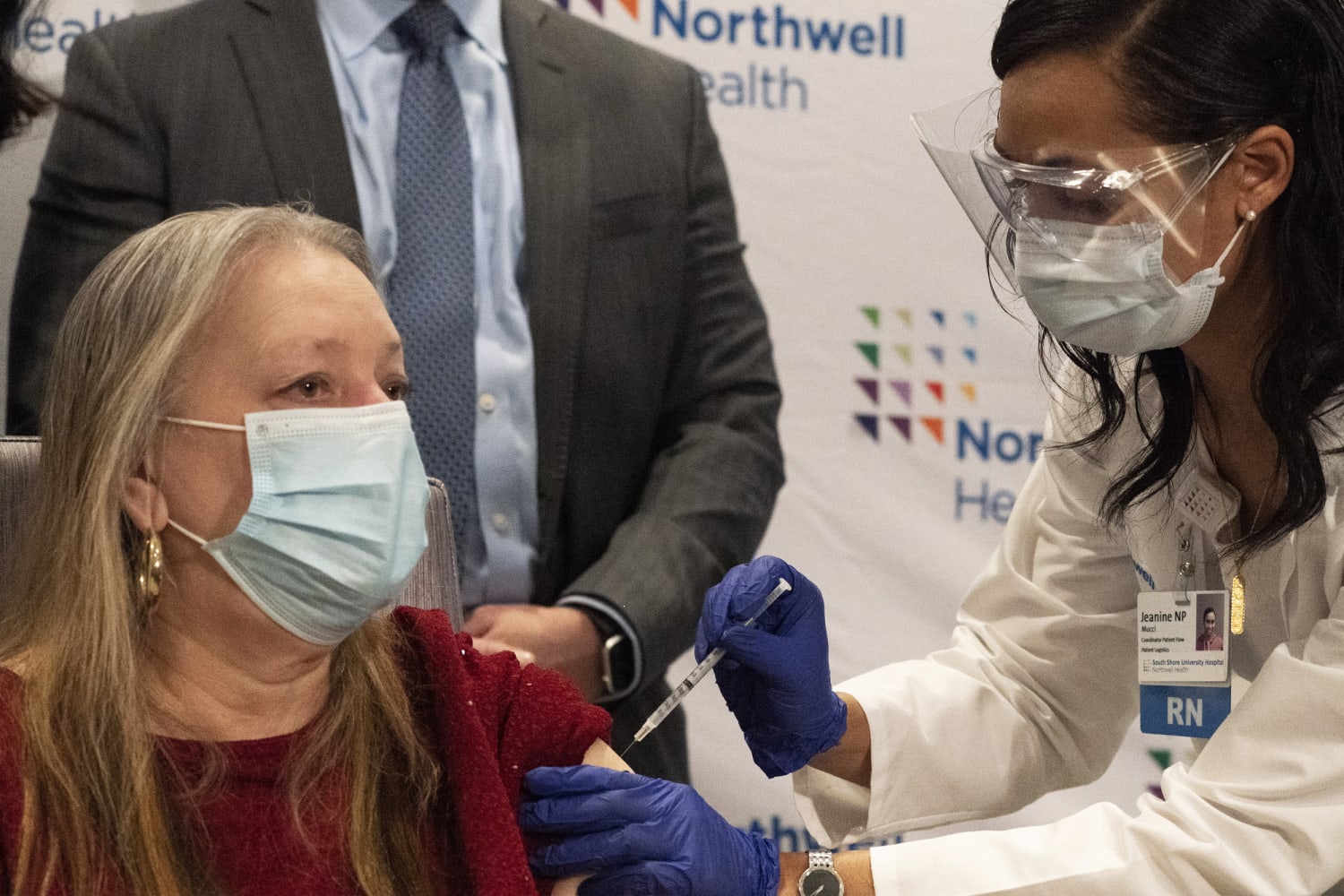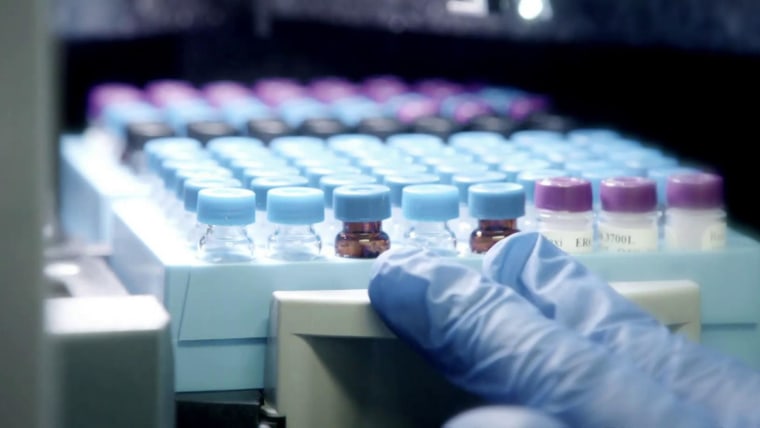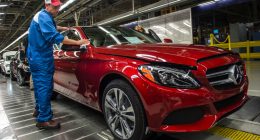The first 4 million doses of Johnson & Johnson’s Covid-19 vaccine are rolling out this week, joining vaccines from the drugmakers Moderna and Pfizer-BioNTech, which have been in use since December.
Johnson & Johnson’s single-dose shot, made in partnership with Janssen Pharmaceuticals, differs from the other two in several ways. It’s made differently and, at first glance, might appear to be less effective.
Full coverage of the coronavirus outbreak
But that does not necessarily mean the Johnson & Johnson vaccine is inferior. Here’s why:
How effective is the Johnson & Johnson vaccine?
When companies report results from clinical trials, they report the “percent effectiveness” of a vaccine. A vaccine that’s 90 percent effective at preventing illness does not mean that 10 percent of people who received it will get sick; rather, it means that people who received the vaccine were 90 percent less likely to get sick, compared with people who received the placebo.
In Johnson & Johnson’s trial, researchers looked at different outcomes in different parts of the world. In the United States, for example, the vaccine was found to be 72 percent effective at preventing what the company defined as moderate to severe Covid-19. That was a broad definition, which ranged from a combination of milder symptoms, such as fever and headache, to more severe symptoms, such as shortness of breath and low oxygen levels.
That effectiveness varied when researchers tested the vaccine in other countries, where variants of the virus are circulating. In Latin America, where the variant P.1 has cropped up, the vaccine was found to be 66 percent effective. Studies conducted in South Africa, where a variant called B.1.351 is circulating, effectiveness was lower: 64 percent.
But these numbers don’t tell the whole story.
When researchers looked specifically at the vaccine’s protection against the most severe forms of illness, the effectiveness shot up to 86 percent.
And it prevented 100 percent of hospitalizations and deaths related to Covid-19. No one who received the Johnson & Johnson shot was hospitalized or died of Covid-19 during the study’s follow-up period of 28 days post vaccination.
What’s more, the Johnson & Johnson vaccine’s effectiveness against severe disease was found to increase over time — to more than 90 percent within a month and a half after vaccination.
What all of this means in practice is that even if a vaccinated person is infected with the coronavirus, the illness is likely to be one that can be managed at home, experts say. That’s true regardless of the variant.
“Even if they get Covid, their symptoms are much more mild than people who got the placebo and got Covid,” said Dr. Paul Goepfert, a professor of medicine at the University of Alabama at Birmingham and the director of the Alabama Vaccine Research Clinic. Goepfert was an investigator in the Johnson & Johnson vaccine trials.
Dr. Paul Offit, a vaccine researcher at the Children’s Hospital of Philadelphia, put it more bluntly: the Johnson & Johnson vaccine “will definitely keep you out of the hospital, keep you out of the ICU, and will keep you out of the morgue.”
How does the Johnson & Johnson vaccine compare to other vaccines?
At first glance, the Johnson & Johnson vaccine looks to be the inferior option compared to vaccines from Pfizer-BioNTech and Moderna, both of which reported around 95 percent effectiveness in their Phase 3 clinical trials.
Experts say in no way should those percentages be interpreted in a way that suggests the Johnson & Johnson shot — with its 72 percent effectiveness — is 23 percentage points less effective.
The percentages cannot be compared directly to one another because the trials were run differently. The vaccines were studied at different times during the pandemic, when different variants were circulating.
SARS-CoV-2, the virus that causes Covid-19, has been changing ever since it was first discovered in Wuhan, China.
“The virus that swept through China was not the virus that left China,” Offit said. “The virus that left China was the first variant, and it was more contagious than the one that originally popped up.”
Both Moderna and Pfizer-BioNTech successfully targeted that variant, called D614G, which was the predominant variant when those trials took place. Johnson & Johnson’s Phase 3 clinical trials began later, after the emergence of certain other variants.
That could account for the decreased effectiveness seen in Johnson & Johnson’s trials.
There is no way to know how the Moderna and the Pfizer-BioNTech vaccines would have fared in the same scenario.
“I am speculating,” Dr. William Schaffner, an infectious diseases expert at the Vanderbilt University Medical Center, cautioned, “but the notion is that, yes, we think that if the Moderna and Pfizer people had been in South Africa at the same time that Johnson & Johnson were testing their vaccine, we would probably get all very comparable results.”
Ultimately, all three vaccines are equally as likely to “keep you out of the doctor’s office” if you are infected, Offit said. He was part of the independent panel of experts that voted unanimously to recommend the Food and Drug Administration authorize the Johnson & Johnson vaccine for emergency use in February.
What are the benefits of this vaccine?
The Johnson & Johnson vaccine can be kept in regular refrigerators and does not require as stringent cold-storage conditions as the Moderna and the Pfizer-BioNTech vaccines do. This makes it easier to transport and distribute, which could make it a more practical option for mobile or drive-through vaccination sites and for rural communities.
“It has the potential to reach many people who have had great logistical barriers,” said Dr. Muriel Jean-Jacques, an assistant professor of medicine at Northwestern University. “It has literally taken the National Guard and the military to get the vaccine out effectively to many rural communities. How wonderful it is to be able to do that much more simply.”
The Johnson & Johnson vaccine also requires only a single dose, which will alleviate the administrative burdens of scheduling two shots several weeks apart. As such, this vaccine may be ideal for some communities that have struggled to access other vaccines that are currently available.
“I have many homebound seniors who love the idea of having someone come to their home once — or if they have to leave their home, they only have to leave once — and then they’re protected,” Jean-Jacques said. “So, there are many people who would be very happy with a one-shot vaccine.”
Dr. Carlos del Rio, executive associate dean of the Emory University School of Medicine in Atlanta, agreed, noting that the one-dose regimen may be preferable for some people whose work and/or home life may make it more difficult to make two appointments.
Some people “cannot afford to take a day off to get a second vaccine,” he said. “If you are unlikely to return for a second vaccine, I think the Johnson & Johnson may be better.”
How does the vaccine work?
The Johnson & Johnson vaccine is what’s known as an adenovirus vector vaccine. It uses an inactivated adenovirus, a type of virus that can cause the common cold, that has been engineered to carry the genetic code for the coronavirus’s spike protein. These genetic instructions allow the body to build the spike protein, which the immune system learns to recognize. That way, if the real virus shows up, the immune system will already know how to defend itself.
The vaccine uses a modified adenovirus to enter cells and deliver the genetic code for the spike protein, but the viral vector itself is harmless.
“It’s not a true virus — it has been modified so that you don’t get infected,” said Dr. Arnold Kriegstein, a professor of neurology and director of the stem cell program at the University of California, San Francisco.
The vaccines made by Moderna and Pfizer-BioNTech use a different approach to teach the body how to build the coronavirus’s spike protein. Both of those vaccines use synthetic messenger RNA, or mRNA, to deliver bits of genetic code to cells that trigger an immune response.
What’s in the vaccine?
After the Johnson & Johnson vaccine was granted the emergency use authorization from the FDA, concerns arose about what is contained in the vaccine and how it was made.
The Roman Catholic Archdiocese of New Orleans issued a statement Monday urging its parishioners to avoid the vaccine, calling it “morally compromised” because of its links to cells that were derived from aborted fetal tissue. Notably, the statement was a departure from the Vatican, which earlier this year said it was “morally acceptable” for Roman Catholics to receive any Covid-19 vaccine.
The Johnson & Johnson vaccine does not contain fetal tissue, but like many other vaccines, was tested and developed using cells that were originally derived from fetal tissue decades ago.
These cells are commonly used in scientific research because they can replicate easily, which means scientists effectively have an unlimited supply of these “immortalized” cell lines.
“You can grow them very quickly and then they just divide and divide and divide,” Kriegstein said.
In vaccine research, human fetal cell lines are used to assess how well the candidates perform. These cells were instrumental, for instance, in the development of vaccines that protect against chicken pox, rubella and polio, Kriegstein said.
“If you’re trying to test a vaccine to see if it works effectively and you need to create large numbers of the virus, the quickest way is to grow them in these human cells,” he said. “They’re perfect hosts for the virus.”
Indeed, Johnson & Johnson used cells derived from fetal tissue to grow the adenoviruses needed to manufacture the vaccine. But the cells are not an ingredient in the actual vaccines themselves.
“The cells that are used now were never in a fetus — they are not fetal cells,” Kriegstein said. “In fact, these cell lines have been used for decades, and they have divided and divided tens of thousands of times, so we’re not talking about any cells that actually came directly from a fetus.”
What are the side effects?
The most common side effects that were reported in clinical trials of the Johnson & Johnson vaccine were ones that are generally expected after any vaccination. These side effects include pain at the injection site, redness of the skin, muscle pain, headache, fatigue, nausea and fever. While they may be uncomfortable, these side effects actually signal that the immune system is responding to the vaccine.
“It’s better tolerated than the Pfizer or Moderna vaccine in terms of local, what we call reactogenicity — [it] causes less people to have a sore arm, less people have what we call systemic side effects, including fatigue, fever, myalgias [and] headache,” Goepfert said.
Download the NBC News app for full coverage of the coronavirus outbreak
No serious or long-term side effects were reported during Johnson & Johnson’s clinical trials, but the company is investigating two cases of severe allergic reactions that were later reported. Health care providers are advised to monitor people who have a history of allergic reactions for 30 minutes after vaccination, and for 15 minutes for all other patients.
According to the Centers for Disease Control and Prevention, rare cases of anaphylaxis, a life-threatening allergic reaction, occurred at a rate of 4.5 cases per 1 million doses administered of both the Moderna and the Pfizer-BioNTech vaccines.
When will it be available?
States already received their first batch of the Johnson & Johnson vaccine this week. In addition to the 4 million doses shipped out Monday, the company is expected to deliver a total of 20 million doses by the end of the month.
A deal between Johnson & Johnson and Merck was announced Tuesday that aims to speed up production of the single-dose vaccine. As was first reported by The Washington Post, the partnership between the two pharmaceutical giants was brokered by the federal government after Biden administration officials learned that Johnson & Johnson had fallen behind on its manufacturing targets.
Johnson & Johnson’s CEO Alex Gorsky said Monday on NBC’s “TODAY” show that the company is aiming to distribute 100 million shots by the end of June and 1 billion by the end of the year.
Follow NBC HEALTH on Twitter & Facebook.
Source: | This article originally belongs to Nbcnews.com











